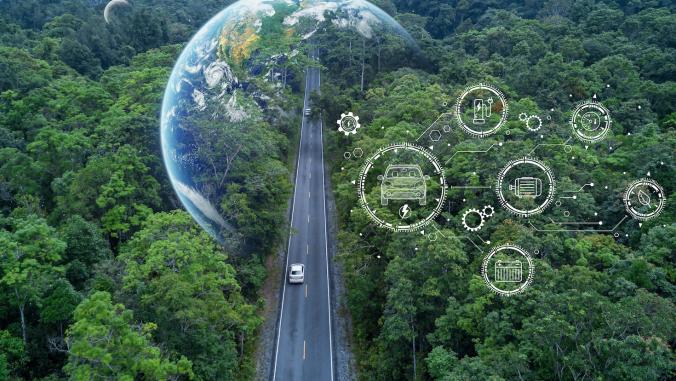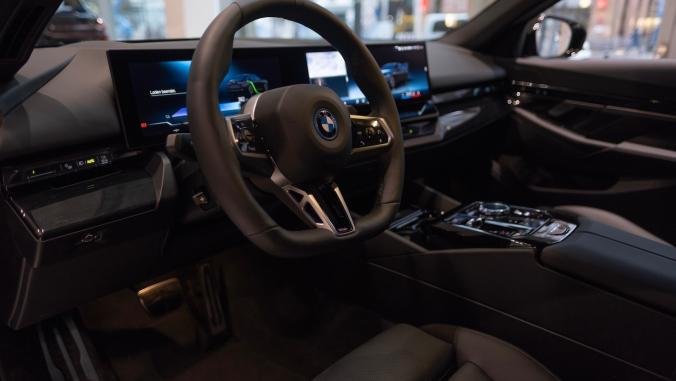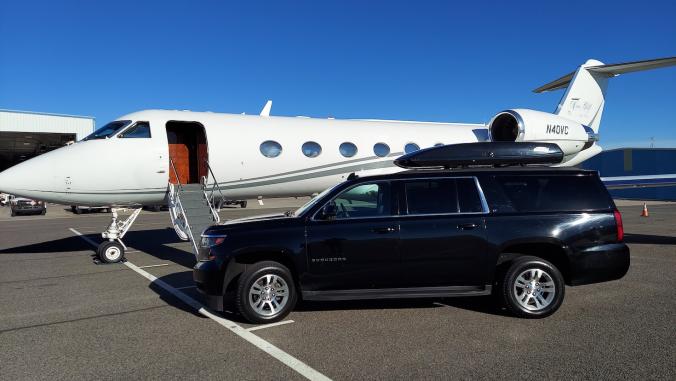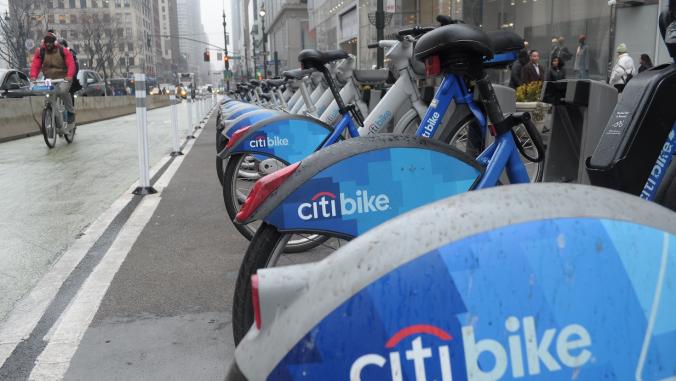The Consumer Electronics Show (CES) in Las Vegas is the place to put daydreaming of the future aside and instead, step directly into it. It's where more than 115,000 people gathered this year alongside more than 3,200 exhibitors to get hands-on experience with the technologies of tomorrow.
I arrived at CES 2023 with one mission — to see where the transport industry is heading. While CES cannot fully capture where the entire industry is going in the years ahead, it can provide a good direction. Thus, I fully immersed myself in the automotive and transport world on display to understand what's new and trending.
To share my experiences and conversations, Transport Weekly will do a three-part series to explore CES from different angles. This edition recaps my experience and takes a look at some of the automotive industry’s biggest shifts — electrification and software. The following edition will dive into three conversations I had during CES — with Candela, Zoox and VinFast. The final edition of this series will touch on electric vehicle (EV) charging and industry leaders' overall attitude toward it.
CES began with a bang
For someone whose passion centers on transportation decarbonization, I found myself incredibly joyous after only a few short hours at CES. But my CES experience started well before entering the West Hall, where much of the transportation world was showcasing its innovations.
What do I mean? Well — upon landing at the airport, I realized that Las Vegas is covered in Teslas, as it seemed like every eighth car on the road was a Tesla (yes, I tried counting). While my perception is anecdotal, earlier reports indicate that Las Vegas is becoming an EV growth hub, possibly driven by Tesla's presence in Nevada with its Gigafactory.
But as I got closer to the convention center, I started seeing more diversity in EV models. Outside of the West Hall, I saw rows of Mercedes EQSs ready to shuttle executives around, dozens of VinFast models waiting to be test-driven by excited attendees and of course, still seemingly endless Teslas among other brands. And that doesn't include the dozens and dozens of EVs parked inside the West Hall from the likes of Lucid, Volvo, VW, BMW, Ford and GM.

The VinFast booth showcased several all-electric vehicles for the North American market.
But nowhere outside of CES did it feel like there was a greater EV presence in one central location than in the Las Vegas Loop (a.k.a. The Boring Company's project). Throughout CES, there was a consistent stampede of people walking to the various Loop stations with smiles on their faces, phones out recording as they jumped into a Tesla Model Y or Model X to be shuttled underground across the convention center halls. Beyond just the convenience of getting to your location in two minutes — whereas walking would have taken 30 minutes or more — the Loop emphasized that the future of transportation is electric and that it's here.
Once I entered the West Hall and soaked it all in, four realizations dawned on me:
- The internal combustion engine (ICE) vehicle for passenger cars is dead. Yes, I mean dead!
- Software is king now for OEMs, and those who intentionally drag their feet will be left behind.
- The push for vehicle autonomy has taken a back seat, at least at CES, as companies focus on what is possible now and in the near term regarding innovation and revenue generation.
- The line between the tech and climate communities are increasingly becoming blurred.
Let's look at each in a bit more detail.
1. The ICE is dead
Regarding the not-so-tragic death of the ICE vehicle — let me explain before anyone rolls their eyes at my outlandish and overly simplistic statement. Of course, it will take time for ICE vehicles to phase out of markets and for companies to stop selling them, with or without ICE end-date commitments that many automotive companies have pledged to already. Additionally, my statement is really centering on passenger vehicles, as it will still take some time for heavy-duty vehicles to reach a similar sentiment, even though a lot of progress has been made in that weight class.
However, it was clear at CES that if you’re an automotive company and want to be taken seriously, then you needed to showcase your EVs. Russell Hensley, a partner at McKinsey who co-leads the McKinsey Center for Future Mobility, reiterated this trend and the transition while at CES. "The biggest trend in the next seven years is going to be an increase in the diversity of EVs that are on offer," Hensley said. "You [the automotive industry] are in a massive transitional phase, and it will take time."
In speaking with attendees and being on the ground, you could feel the expectation from people that automotive companies needed to show up with EVs, and they need to keep producing more models. At least at CES, that is exactly what was happening as wherever you looked, EVs were on display with crowds hovering around them.

A prototype from Afeela — Sony and Honda's newly announced automotive brand.
2. Software is king
In addition to electrification, the software experience within a vehicle is a growing force of change in the automotive world. "Connected Vehicle Intel Report," a session led by Steve Greenfield, CEO of Automotive Ventures, delved into the many seismic shifts underway for automotive companies, one of which involves software.
One of the many reasons Tesla vehicles are so popular is because the software experience is so incredible. Over-the-air updates seemingly refresh your car and even add features that did not exist when you bought it. Some examples include improved 0-60 speeds, added streaming features when charging and even repairs that reduce the need to visit service centers.
However, for legacy automakers, while the need to focus on software is evident, there may be a reason it raises concerns for them. Citing ABI Research, Greenfield showcased that over-the-air software updates greatly affect warranty work, which for legacy automakers has been a cash cow for many decades. Typically the annual warranty work market has averaged around $18 billion; with over-the-air software updates, it is projected to decrease to $6 billion. But where one profit margin falls, another opportunity grows. With the wave of software integration in vehicles, subscription-based services are growing, allowing drivers to pay monthly and unlock features such as faster horsepower or even heated seats.

Volvo's all-electric 2024 EX90 SUV.
A subscription-based automotive industry can potentially be lucrative for automotive companies as they make profits even when you are not driving the car. Even the highly anticipated Volvo EX90, which debuted at CES 2023, will have a Google-based infotainment system built into it with new mapping software designed specifically for cars, continuing to point to an automotive future that is software driven.
3. Autonomy takes a back seat
I also found it incredibly interesting to find certain tech missing at CES. Autonomous vehicle technology was the talk of the town in years past. However, this year it seemed to take a back seat to electrification, all the while still present but in the shadow of EVs. Gary Shapiro, president of the Consumer Technology Association, which hosts CES, recognized this same shift when speaking to CleanTechnica.
I caught up with Mark Frichtl, CTO and co-founder of Ouster, a lidar sensor company, who spoke to me about how, while full vehicle autonomy is a while away, the technology is still being used across our economy today. "Everyone is familiar with autonomous vehicles as they see lidar sensors on top of them as it is like the pot of gold at the end of the rainbow," Frichtl said. "But the thing they don't realize is that lidar is already deployed all over factories, ports and railways. These places that are moving large amounts of material and goods around are already adopting this, and that is more important for the real economy today in terms of efficiency and sustainability."
That sentiment — "what’s important for the real economy today" — was circulating throughout CES. Hensley touched on that in part when he and I spoke. "Investors are very cautious [coming out of COVID-19], and they want to see something that is actually generating revenue," said Hensley. Thus, producing revenue today may be the reason so much of the focus at CES shifted from grand autonomy showcases to electrification.
4. Climate tech is the new tech
Beyond all the excitement for electrification and the major disruptive shifts underway, I found the merging of sustainability and technology best on display at CES. In my opinion, the tech world is morphing into the climate tech world as much of what was on display at CES was presented, at least partially, to help address sustainability and climate. Such is not new to GreenBiz or me, as that is what VERGE, our industry-leading climate tech event, stands for and represents.
Here are some examples I found super-interesting:
- Ouster’s lidar sensors are being used to monitor melting ice caps on a level of detail never seen before.
- Blackberry’s IVY is a middleware piece of software that allows you to take signals from sensors in the car to then allow partners to create solutions for the vehicle without creating additional hardware products.
- SK Group displayed more than 40 eco-friendly technologies, along with a booth that beautifully showcased the impacts of climate change through key landmarks being underwater. Fun fact: SK had a consistent line wrapped around its booth waiting to get in.
Stay tuned for next week as I pull the curtain back on some companies electrifying ferries/boats, autonomous shuttles and passenger SUVs.






